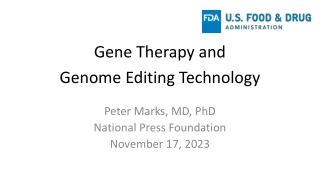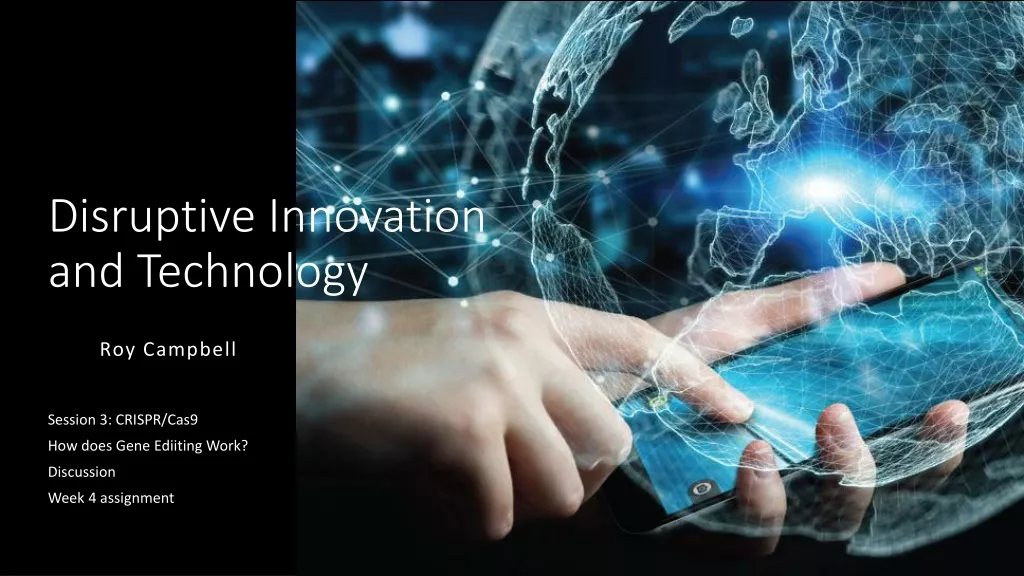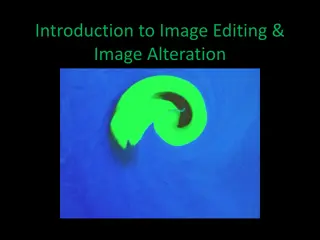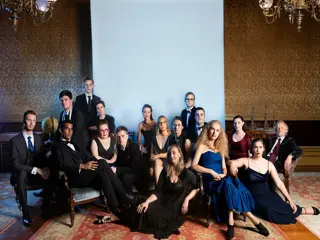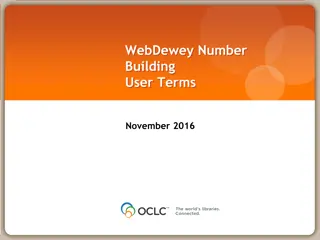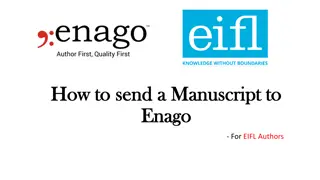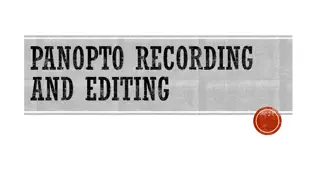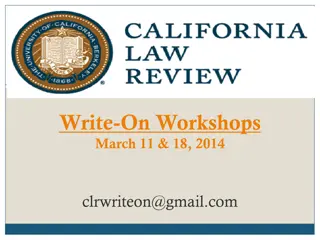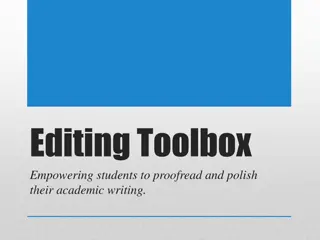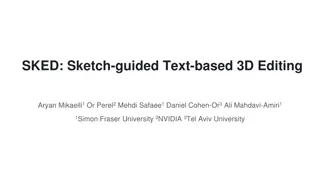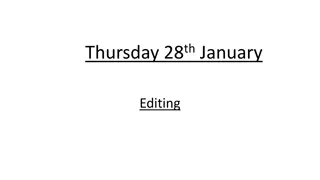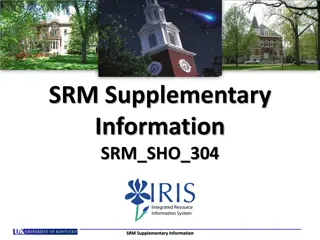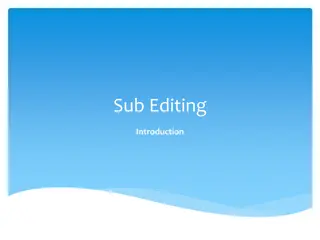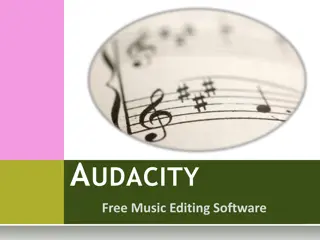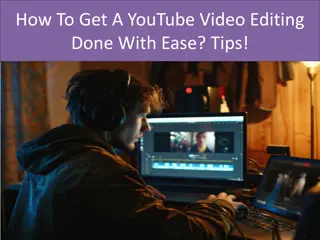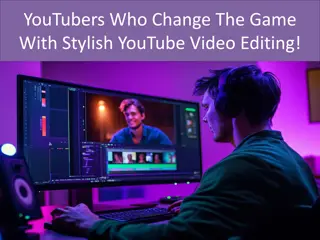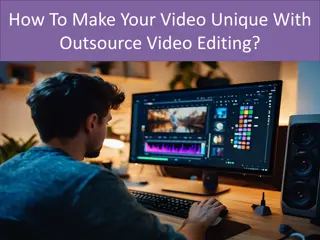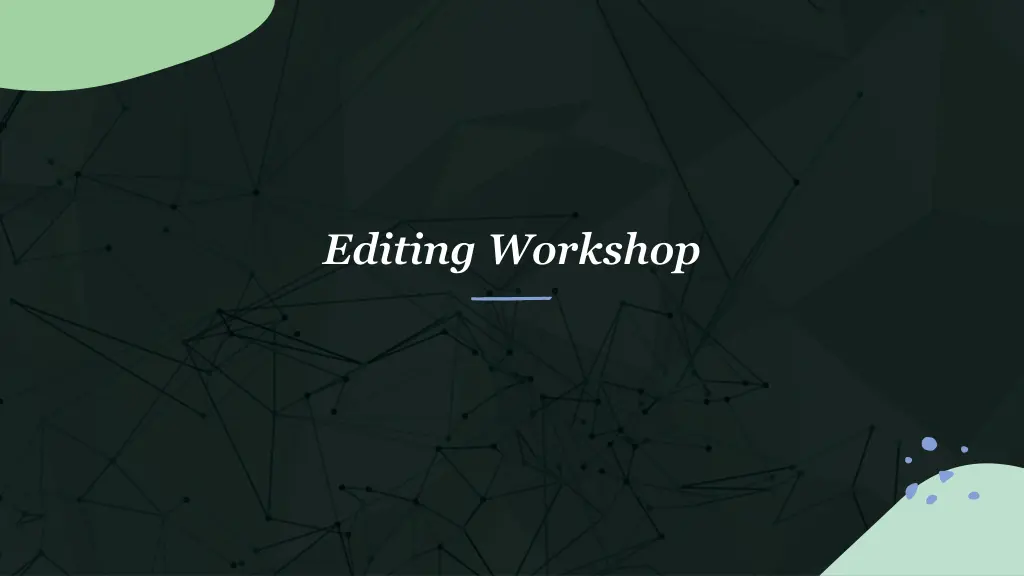
Ultimate Guide to Editorial Editing Process
Dive into the world of editing with insights on what editors do, the editing process, tips for a deeper editing dive, and specific editing guidelines for news and culture/opinion pieces.
Uploaded on | 1 Views
Download Presentation

Please find below an Image/Link to download the presentation.
The content on the website is provided AS IS for your information and personal use only. It may not be sold, licensed, or shared on other websites without obtaining consent from the author. If you encounter any issues during the download, it is possible that the publisher has removed the file from their server.
You are allowed to download the files provided on this website for personal or commercial use, subject to the condition that they are used lawfully. All files are the property of their respective owners.
The content on the website is provided AS IS for your information and personal use only. It may not be sold, licensed, or shared on other websites without obtaining consent from the author.
E N D
Presentation Transcript
What does an editor do? COMMISSION PIECES SPECIFIC REQUESTS FOR ARTICLES ON CERTAIN CURRENT TOPICS. EDIT! LOOK OVER SUBMISSIONS FROM WRITERS, MAKE SUGGESTIONS, AND PROVIDE GENERAL FEEDBACK. THIS MIGHT INCLUDE MULTIPLE COURSES OF EDITS FOR THE SAME PIECE. EDITORS USUALLY EDIT 1- 2 PIECES PER WEEK BE CREATIVE COME UP WITH IDEAS FOR THE SECTION THEY WORK ON (ALL EDITORS ARE ASSIGNED A SECTION) BOTH FOR IN PRINT AND ONLINE. HELP WITH PUTTING TOGETHER THE PRINT EDITION(S), USING INDESIGN (SOFTWARE). WRITE! WHERE TIME ALLOWS AND THEY HAVE THEIR OWN PASSIONS AND IDEAS.
The editing process 1. Approval either accepting someone taking up a commission or confirming that their pitch is something that would suit the section. 2. First draft providing general suggestions about whether the piece fits the publication stylistically (USING A STYLE GUIDE), and checking it flows well. Also the point to eradicate any SPAG issues. 3. Return the piece to the author to allow them to action suggested edits. 4. Second draft check over and make any final changes / major ones if needed. 5. Repeat rounds of edits until both editor and writer are happy with the piece then get it up online, and in print!
A deeper dive into editing Read through the whole piece first. Which bits stand out? Are there any major structural issues? Does it read well? Is the tone suitable for the section? Do parts of the article need restructuring? How can you restructure the article while ensuring the author still feels ownership of it? Is it concise? Any article should be no longer than it needs to be to get its points across. Does it closely match the style guide of your publication? These are important for consistency and making sure all articles are of a basic standard. The last thing you should be checking over is SPAG this is important but there is a common misconception that correcting spelling mistakes are the main thing to be looking for when editing.
Editing a news piece News pieces should be clear and get the facts across as clearly and concisely as possible. Read the piece through. What is the most important bit of information? What is the story? News pieces should be ordered in terms of importance The Headline Goes First! Take an outsiders' perspective on the piece. No prior knowledge should be assumed. Does the piece explain everything? For instance, acronyms should be expanded initially. There should be no judgement in the piece or opinions given. Think about potential defamation and the need for RoRs We'll get onto this in detail later
Editing a culture / opinion piece How can you balance improving an article with maintaining the original voice of its author? Editing a piece where voice is important is less formulaic than in news. Think about which sentences and paragraphs flow well, and how that can be brought to weaker sections. You might have to be more sensitive in how you edit here - you can't change the content where you are dealing with opinions and experiences. You might, however, challenge assumptions they have made in their arguments. Do their points link up to create a coherent argument? Importantly, is it convincing? I would also always be asking myself how does what is written here link back to the student experience?
Editing a science piece Again, read the whole piece through. Does it make sense as a whole? Does it need restructuring? It's important to think of the target audience with technical pieces. How much knowledge do you expect the reader to have and does the piece follow that? You can look at breaking down the language used to make it simpler or more complicated to help with this process. Is it more complicated than it needs to be? Writers will often use as much technical language as possible to show expertise. But, as always, if you can write it more simply and concisely, that's probably better!
Editing a fiction piece Editing fiction can be daunting. You want to try and elevate the authors voice and opinion as much as possible. But it's no different to any other piece! Fiction pieces and poetry often need as much restructuring as any other. A good place to start is to have a sense of the narrative of the piece. What is the piece trying to do and convey? You can even have this conversation with the writer to clarify this. Once you have a sense of the narrative of the piece, it's easier to assess how the current structure/language fits into that model. Again, it should stay as concise as possible. Every word and phrase should serve a purpose. Breaking it down sentence by sentence is often a helpful way to assess this.
TASK editing a piece On the next slide is a (not so good) news article. You have 10 minutes to look through it and make some notes of the edits you would make. Think about structure and organisation, tone, style, and SPAG. BONUS question: are there any legal issues that could arise from this article in its current form?
Other things to look out for Defamation ... What is defamation? Defamation is the action of damaging the good reputation of someone. You can't make unfounded claims against someone. So... I'm not with my younger brothers today. If I publish that they smell online, they'd probably have a reasonable case for defamation, as I have no evidence! You also can also be liable for defamation, even if you don't name someone, if its implied. For instance, if I say to my mother, "I don't know who ate all the cookies but someone must have" and then look at my brother, I'm implying he did it! The same rule applies to writing. If you could work out who a person/company/organisation is, even if you haven't named them, you could be liable for defamation.
Right of Reply Even where your claims about another person are true, and can be backed up with evidence, it is good journalistic practice to give them a chance to reply to any accusations made. This goes for any level of accusation that could damage their reputation! If in doubt, it is often better to RoR than to risk action being taken later on. RoRs often take the form of a series of questions, providing the accused an opportunity to reply to the aspects of the article relevant to them (note that they are not shown the actual article). RoRs are not just necessary in news pieces. They are sometimes needed where accusations are made in opinion pieces.
and images If you remember one thing from today, remember this! You don't have the right to use any images on the internet, unless they are specifically under a Creative Commons license.
Editing a piece on a sensitive topic If you take on an editorial role, you may occasionally come across pieces written on sensitive topics. The important thing to remember is that in any entry level position you will always have an experienced senior editorial team who are on hand to help if there is anything that makes you feel uncomfortable. If you have any concerns around the welfare of an author or another student, you should always escalate to a more senior member of the team. Publishing on difficult topics is an important part of what we do (and can have incredibly positive impacts when done right), but welfare issues are taken very seriously.
General tips! Grammarly is a good, quick way to check for any obvious mistakes. - AI shouldn't be used for writing. In editing, make sure you are giving the proper level of attention to authors' pieces this will likely mean avoiding AI. - A piece may need any number of rounds of edits - don t be disheartened if a piece of yours needs lots, or if it takes a while to see eye to eye with an editor/author. Remember everyone is trying to make the piece as good as possible! -

